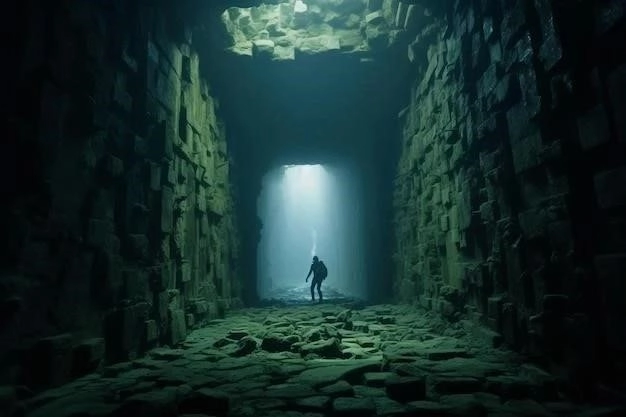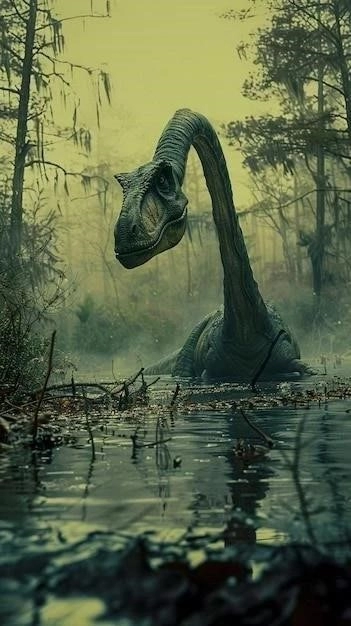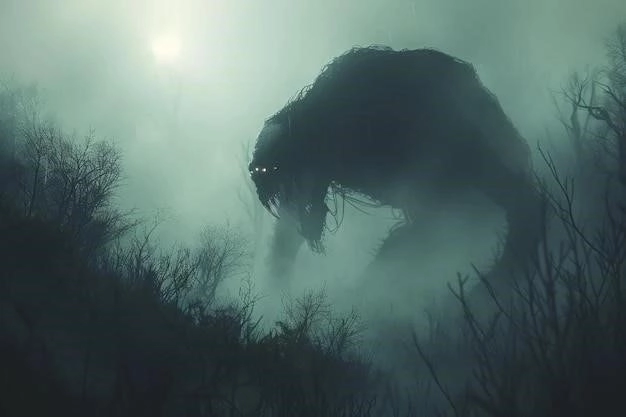The Loch Ness Monster‚ affectionately known as Nessie‚ is a captivating mystery. Said to inhabit the deep‚ dark waters of Loch Ness in the Scottish Highlands‚ this enigmatic creature has been a source of fascination‚ speculation‚ and debate for generations. While countless eyewitness accounts‚ blurry photographs‚ and tantalizing sonar readings have fueled the legend‚ concrete evidence of Nessies existence remains elusive. This article delves into the depths of Loch Ness‚ exploring the history of the legend‚ the scientific investigations‚ and the enduring allure of this elusive creature.
A Legend Born in the Mists of Time
The earliest recorded sighting of a monster in Loch Ness dates back to 565 AD‚ when the Irish missionary Saint Columba allegedly encountered a “water beast” in the River Ness. However‚ the modern legend of the Loch Ness Monster didnt truly take hold until the 20th century. In 1933‚ a new road alongside the loch offered unobstructed views of the water‚ leading to a surge in reported sightings.
One of the most famous alleged photographs of Nessie‚ the “Surgeons Photograph‚” surfaced in 1934‚ depicting a long-necked creature with a serpentine head emerging from the water. However‚ the photograph was later revealed to be a hoax‚ orchestrated by a disgruntled former Daily Mail employee seeking revenge on the newspaper.
The Search for Evidence: Sonar‚ Submersibles‚ and DNA
Despite the lack of definitive proof‚ the search for Nessie has captivated scientists and amateur enthusiasts alike. Over the decades‚ numerous expeditions have attempted to uncover the truth behind the legend‚ employing increasingly sophisticated technology.
Sonar Investigations
Sonar‚ which uses sound waves to detect objects underwater‚ has been a key tool in the hunt for Nessie. In the 1960s‚ sonar expeditions detected large‚ moving objects in the loch‚ but these findings were inconclusive. One notable expedition in 1987‚ Operation Deepscan‚ used a fleet of 24 boats equipped with sonar to conduct a comprehensive sweep of the loch. While the operation yielded some intriguing sonar contacts‚ none could be definitively attributed to Nessie.
Submersible Explorations
Submersibles‚ capable of exploring the depths of Loch Ness firsthand‚ have also been deployed in the search. In 1975‚ a research team from the Academy of Applied Science used a submersible equipped with sonar and underwater cameras. They reported capturing images of a large flipper-like appendage‚ but the quality of the images was too poor to draw any definitive conclusions.
Environmental DNA (eDNA) Analysis
In recent years‚ scientists have turned to environmental DNA (eDNA) analysis to survey the biodiversity of Loch Ness. This technique involves analyzing DNA fragments shed by organisms into the environment. While the primary goal of the eDNA study was to catalog the lochs diverse life forms‚ researchers were also open to the possibility of finding evidence of Nessie. However‚ the study‚ completed in 2019‚ did not find any genetic traces of a large‚ unknown animal.
Possible Explanations for the Sightings
While the existence of a large‚ unknown creature in Loch Ness remains unproven‚ several theories have been proposed to explain the persistent sightings:
Misidentified Animals
Many sightings of Nessie could be attributed to misidentifications of known animals‚ such as otters‚ seals‚ or large fish like sturgeon or catfish. The elongated necks and humps often described by witnesses could be explained by the movements of these animals in the water.
Seiches and Other Natural Phenomena
Loch Ness is prone to seiches‚ which are standing waves that can occur in enclosed bodies of water. These waves can create unusual disturbances on the surface‚ potentially leading to misinterpretations of boat wakes or other surface phenomena as monstrous creatures.
Hoaxes and Optical Illusions
As with many legendary creatures‚ the possibility of hoaxes and optical illusions cannot be discounted. The vastness and murky depths of Loch Ness provide ample opportunity for pranks and misinterpretations of visual cues.
The Enduring Allure of the Unknown
Despite the lack of conclusive evidence‚ the legend of the Loch Ness Monster endures. The mystery continues to capture imaginations‚ drawing visitors from around the globe to the shores of Loch Ness. Whether Nessie is a real creature‚ a figment of imagination‚ or a combination of both‚ the legend serves as a reminder of the enduring power of mystery and the unexplored corners of our world. The search for Nessie‚ in many ways‚ is a reflection of our own fascination with the unknown and our desire to uncover the secrets that lie hidden beneath the surface.

Conclusion
The mystery of the Loch Ness Monster remains unsolved. While scientific investigations have yet to confirm Nessies existence‚ the legend continues to captivate and inspire. Whether a product of folklore‚ misidentification‚ or a genuine enigma‚ the Loch Ness Monster serves as a powerful reminder of the enduring allure of the unknown and the mysteries that still lurk in the depths of our world.
The Role of Perception and Cultural Significance
Beyond the realm of scientific inquiry‚ the persistent allure of the Loch Ness Monster speaks to a deeper fascination with the unknown and the power of human perception. Sightings‚ often influenced by pre-existing beliefs and expectations‚ highlight the subjective nature of observation and the role of cultural narratives in shaping our understanding of the world. The monster‚ regardless of its physical reality‚ has become deeply ingrained in Scottish folklore and serves as a powerful symbol of the regions mystique and natural wonder.

The Future of the Search: Technological Advancements and Evolving Perspectives
As technology continues to advance‚ new avenues for investigating the Loch Ness Monster may emerge. Improved sonar systems‚ autonomous underwater vehicles (AUVs) equipped with high-definition cameras‚ and sophisticated eDNA analysis techniques could potentially provide more conclusive data. However‚ it is crucial to approach the search with a balance of scientific rigor and respect for the cultural significance of the legend.
Ultimately‚ the quest to unravel the mystery of the Loch Ness Monster transcends the pursuit of a cryptid. It compels us to confront the limits of our knowledge‚ the complexities of perception‚ and the enduring power of storytelling in shaping our relationship with the natural world. Whether Nessie is ever definitively proven to exist or not‚ the legend will undoubtedly continue to captivate and inspire‚ reminding us of the boundless mysteries that lie hidden within the depths of our planet and our own imaginations.
The Implications for Cryptozoology and Beyond
The ongoing search for the Loch Ness Monster holds significant implications for the field of cryptozoology‚ the study of hidden or unknown animals. Nessie‚ often dubbed the “worlds most famous cryptid‚” serves as a focal point for discussions on the scientific validity of studying such creatures. While mainstream science often dismisses cryptozoology due to its reliance on anecdotal evidence and lack of empirical data‚ proponents argue for its importance in exploring the fringes of zoological knowledge and challenging established scientific paradigms.
The pursuit of Nessie highlights the challenges inherent in proving the existence of elusive creatures‚ particularly in environments as vast and murky as Loch Ness. It underscores the need for rigorous scientific methodologies‚ including the use of advanced technologies‚ to differentiate between genuine anomalies and misinterpretations of natural phenomena. The lessons learned from the search for Nessie can be applied to other cryptozoological investigations‚ potentially leading to a more nuanced understanding of the boundaries between myth‚ folklore‚ and zoological discovery.
The Socioeconomic Impact of a Global Phenomenon
Beyond its scientific and cultural significance‚ the enduring fascination with the Loch Ness Monster has had a profound socioeconomic impact on the Scottish Highlands. The legend draws millions of tourists to Loch Ness each year‚ generating substantial revenue for the local economy through tourism-related businesses such as hotels‚ restaurants‚ boat tours‚ and souvenir shops.
The monster has become a powerful brand‚ inextricably linked to the regions identity and serving as a global ambassador for Scottish tourism. The image of Nessie graces countless souvenirs‚ from t-shirts and mugs to postcards and keychains‚ solidifying its status as a cultural icon and a testament to the enduring power of folklore in the modern world.
Conclusion: A Legacy of Mystery and Intrigue
The Loch Ness Monster‚ regardless of its true nature‚ stands as a testament to the enduring power of mystery and the human desire to explore the unknown. The legend continues to captivate‚ inspire‚ and spark debate‚ prompting us to question the boundaries of our knowledge and embrace the possibility of discovery. Whether Nessie is ever definitively found or remains forever elusive‚ the search itself holds immeasurable value‚ pushing the boundaries of scientific inquiry‚ enriching our cultural tapestry‚ and reminding us of the boundless wonders that lie hidden within our world.

Beyond the Murky Depths: The Loch Ness Monsters Legacy in the 21st Century
While the pursuit of definitive proof remains a captivating endeavor‚ the cultural impact of the Loch Ness Monster transcends the scientific realm. Nessie has become a global phenomenon‚ firmly embedded in the public consciousness and intrinsically linked to Scotlands image. This enduring fascination presents both opportunities and challenges for the region.
Tourism and Economic Prosperity: Balancing Exploitation and Preservation
The allure of the unknown draws millions of visitors to Loch Ness annually‚ injecting significant revenue into the local economy. This tourism boom‚ however‚ necessitates a delicate balance between capitalizing on the legends popularity and preserving the natural integrity of the loch and its surroundings. Sustainable tourism practices are crucial to mitigate the environmental impact of increased footfall and ensure the longevity of the regions appeal.
Scientific Inquiry in the Spotlight: A Case for Responsible Research
The enduring mystery of the Loch Ness Monster continues to attract scientific inquiry‚ with researchers employing increasingly sophisticated technologies to unlock its secrets. However‚ it is imperative that such investigations prioritize ethical considerations and environmental responsibility. Non-invasive methods that minimize disruption to the lochs ecosystem should be favored‚ ensuring that the pursuit of knowledge does not come at the cost of the very environment being studied.
From Folklore to Cultural Icon: The Enduring Power of Storytelling
The legend of the Loch Ness Monster underscores the enduring power of storytelling in shaping cultural identity and captivating imaginations across generations. Nessie‚ whether rooted in reality or folklore‚ has transcended its aquatic origins to become a global icon‚ embodying the mystery and allure of the unknown. This enduring appeal highlights the importance of preserving cultural narratives and recognizing their influence on our understanding of the world around us.
Looking Ahead: A Future Intertwined with Nessie
The Loch Ness Monster‚ regardless of its true nature‚ will undoubtedly continue to fascinate and inspire for generations to come. As technology advances and our understanding of the natural world evolves‚ the pursuit of Nessie will likely take on new dimensions. Whether or not the mystery is ultimately solved‚ the legend serves as a powerful reminder of the enduring power of the unknown‚ the importance of responsible scientific exploration‚ and the need to balance economic prosperity with environmental preservation in an increasingly interconnected world.










